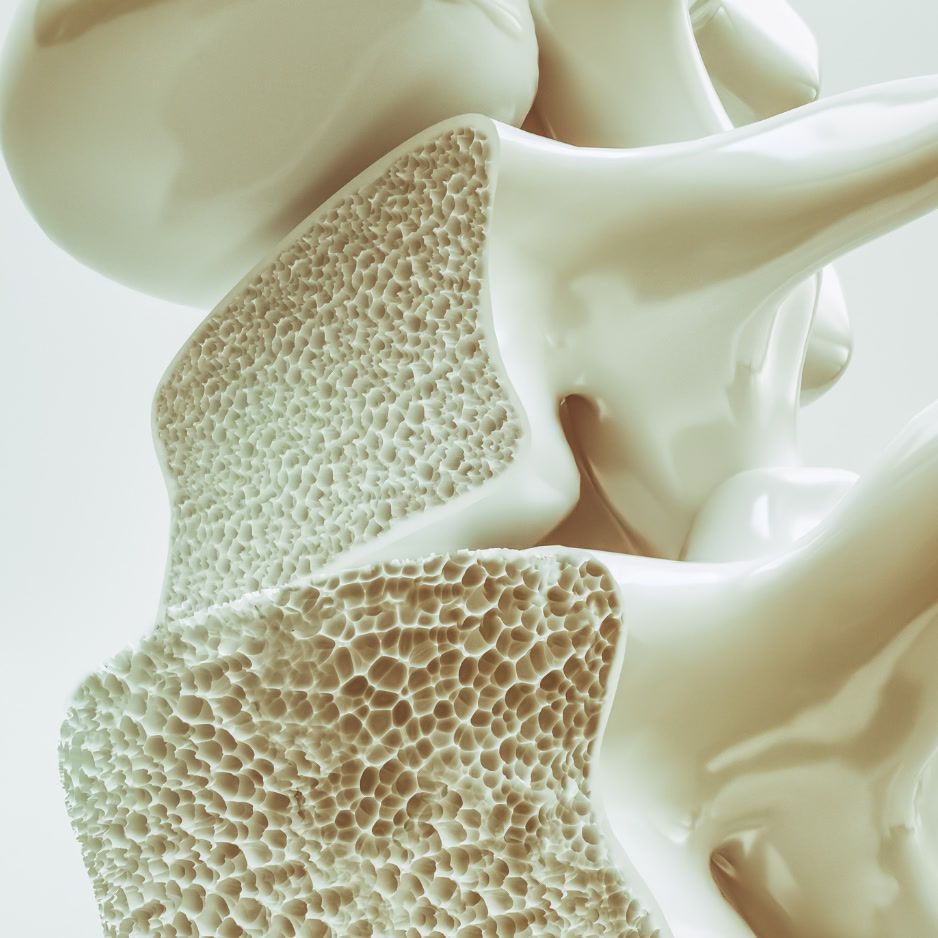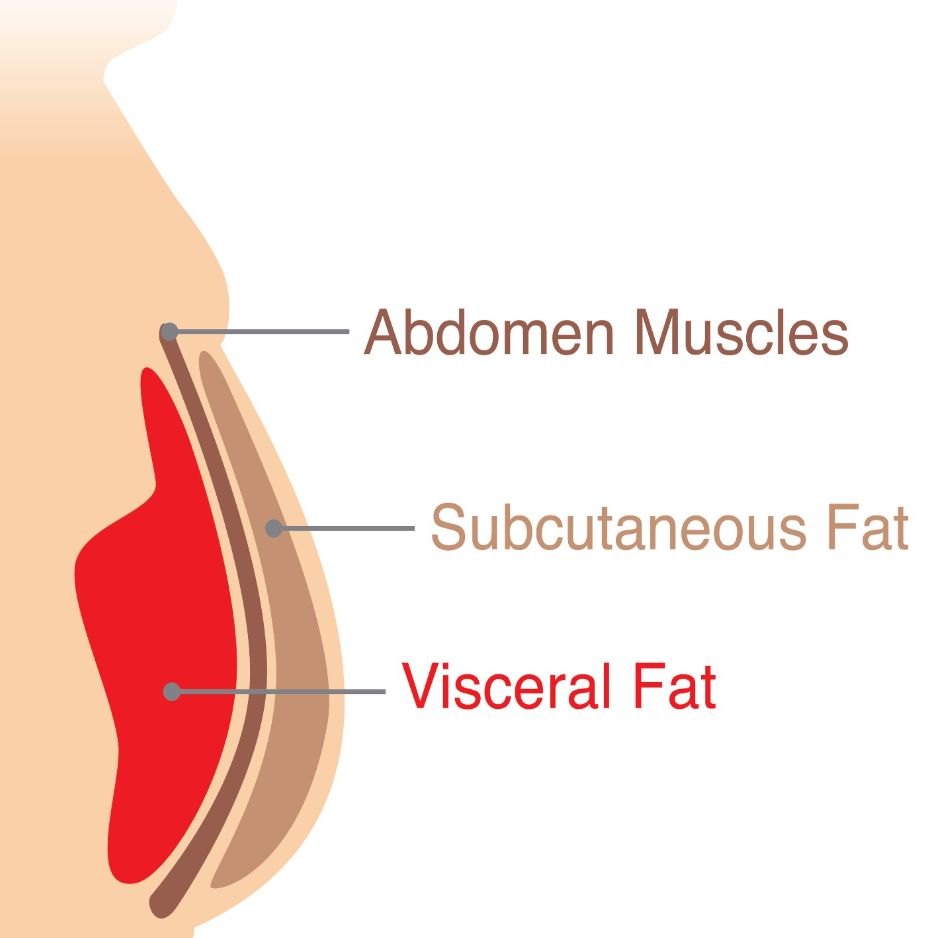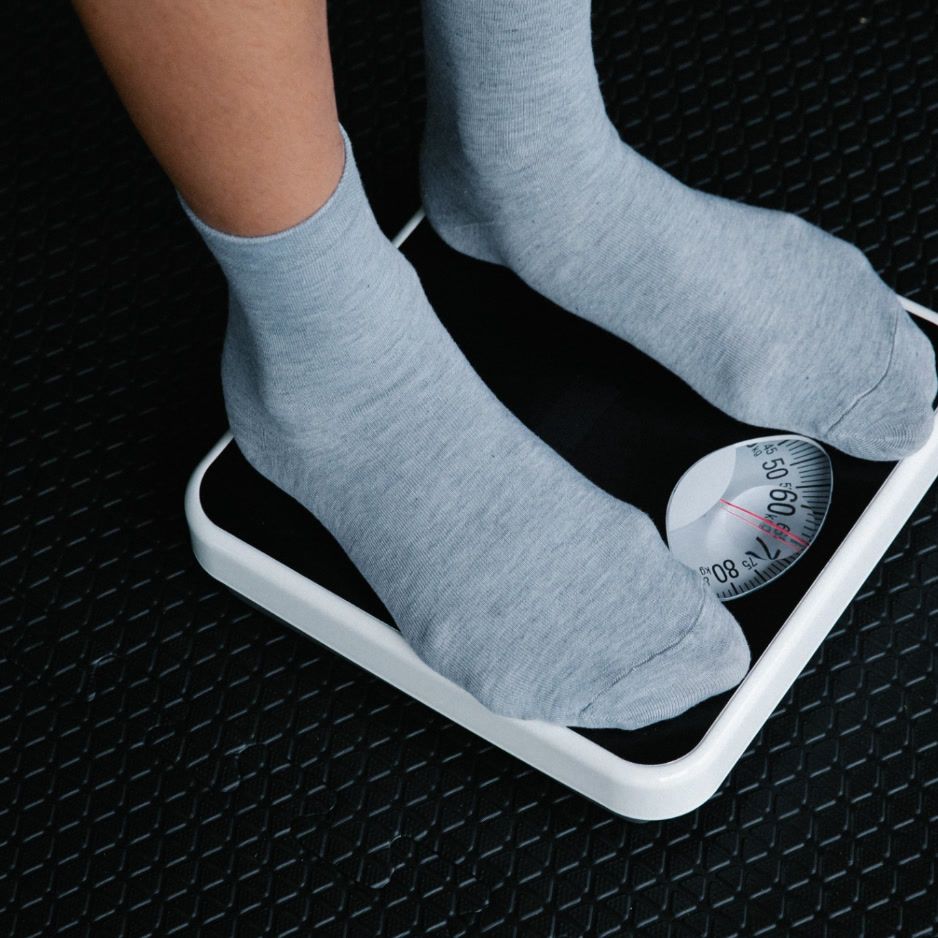10 Treadmill Workouts for Fat Loss, Speed & Endurance

10 Treadmill Workouts for Fat Loss, Speed & Endurance
Looking for a treadmill workout you’ll actually stick to? This friendly, science-backed guide gives you ready-to-use routines for weight loss, HIIT, endurance, and speed—plus simple ways to progress every week. You’ll also learn how to match intensity to your fitness level and how to track real results (fat vs. muscle) with a BodySpec DEXA scan.
Quick answer: best treadmill workout by goal (pick one):
- Lose weight with less impact: 20–30 minutes of incline walking (start 3–5% and build), most days of the week.
- Build endurance (Zone 2): 30–45 minutes at a comfortable, steady pace where you can talk in sentences, 3–5 days/week. Want to train by heart rate? Use this: Heart Rate Zones Guide.
- Get faster: 1–2 interval sessions (hard repeats) + 2–3 easy days per week. In as little as four weeks, sprint‑interval training has been shown to improve performance and VO₂ max.
- Short on time: 20–25 minutes of HIIT (30 seconds hard, 90 seconds easy) 1–2×/week.
- Joint-friendly cardio: Low-to-moderate incline walking and walk–run progressions.
Incline walking makes your body work much harder than flat walking, according to research showing a 52–113% higher metabolic cost at 5–10% grade.
How to Measure Your Effort
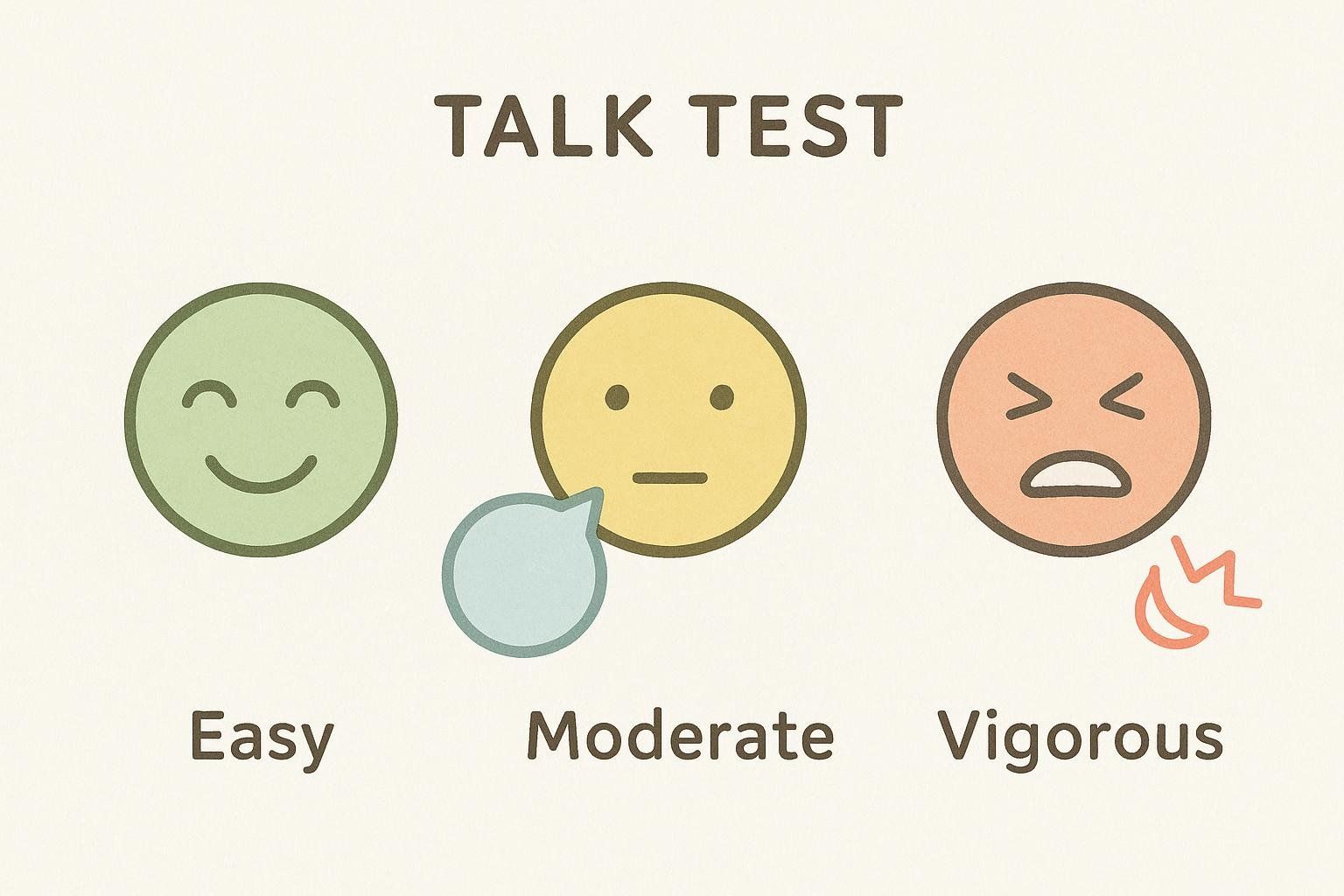
- Talk test: If you can talk but not sing, you’re in moderate intensity. If you can only say a few words before needing a breath, that’s vigorous (CDC guidance on intensity).
- RPE scale (0–10): Rate how hard it feels. Moderate intensity is roughly an RPE of 4–5, while vigorous is an RPE of 6–7 or higher (Cleveland Clinic overview of RPE).
Treadmill Workout Essentials
- Weekly targets: Aim for 150–300 minutes of moderate or 75–150 minutes of vigorous aerobic activity each week. Mixing both is totally fine (CDC adult activity guidelines).
- Warm up for 5 minutes at 0–1% incline. Keep strides short, posture tall, and avoid leaning on the rails, as leaning reduces calorie burn and compromises your form. Our guide on good treadmill incline for weight loss covers best practices and safety in more detail.
- Safety first: Bump up speed or incline gradually (think no more than ~10% per week). Wear grippy shoes, hydrate, and stop if you feel sharp pain, dizziness, or chest discomfort.
10 Science-Backed Treadmill Workouts
Each workout includes effort targets you can hit with the talk test, RPE, or heart-rate zones.
1) 20-Minute Beginner Fat-Loss Walk (joint-friendly)
- Warm-up: 5:00 at 0–1% incline, easy pace (RPE 3)
- Main set: 3 × 4:00 at 3–4% (RPE 4–5), with 1:00 at 1% easy between
- Cool-down: 2:00 flat
- Progression: Add 0.5–1% incline each week once the same speed consistently feels like an RPE of 4 or lower.
- Why it works: Incline raises energy cost significantly compared with flat walking, helping you do more work without running (incline walking increased metabolic cost).
2) 30-Minute 12-3-30 (plus easier ramps)
- Standard: 12% incline; 3.0 mph; 30:00 continuous. Full guide: 12-3-30 Treadmill Workout
- Easier on-ramp:
- 10:00 at 8% (2.7–3.0 mph)
- 10:00 at 10% (2.7–3.0 mph)
- 10:00 at 12% (2.7–3.0 mph)
- Interval variant: 8 × [1:00 at 12% (≈3.0 mph) + 2:00 at 3% easy]
- Progression: Nudge speed up by 0.1–0.2 mph or add 1% incline every 1–2 weeks while maintaining good form (no handrails).
- Evidence snapshot: Compared with self-paced running, 12-3-30 expends fewer calories per minute but shifts more energy use toward fat and is easier on joints.
3) 25-Minute HIIT for Busy Days
- Warm-up: 5:00 easy
- Main set: 10 rounds → 30 seconds hard (RPE 8–9), 90 seconds easy (RPE 2–3). Use speed or a 6–10% incline to hit effort.
- Cool-down: 5:00 easy
- Progression: Add 1 round (up to 12) or increase hard intervals to 40 seconds while keeping recovery at 90 seconds.
- Why it works: High-intensity intervals can match or outperform steady cardio for fat loss in some groups, making them time‑efficient for many people.
4) 30-Minute Tempo Builder (endurance/stamina)

- Warm-up: 8:00 easy
- Main set: 2 × 8:00 at “comfortably hard” (RPE ~6; short phrases only), 2:00 easy jog/walk between
- Cool-down: 4:00 easy
- Progression: Extend each tempo to 10:00–12:00, then consolidate into 20:00 continuous as fitness improves.
- Coach cue: Aim for a cadence around 170–180 SPM if running; if walking, shorten stride and add 1–2% incline to adjust the intensity.
5) 30-Minute 5K Speed Intervals
- Warm-up: 8:00 easy + 4 × 20-second strides
- Main set: 5 × 3:00 hard (RPE 7–8) with 2:00 easy between
- Cool-down: 5:00 easy
- Progression: Add a 6th repeat or reduce recovery to 90 seconds.
- Evidence snapshot: Intervals improve running economy in recreational runners, which supports faster race times.
6) Hill Repeats for Strength & Power (24–28 minutes)
- Warm-up: 6:00 easy
- Main set: 6–8 × 1:00 at 6–10% (RPE 7–8) + 90 seconds flat easy
- Cool-down: 6:00 easy
- Progression: Increase reps to 8–10 or extend hills to 75–90 seconds.
- Coach cue: Keep quick strides and tall posture; reduce speed before you reduce incline to maintain proper form and avoid overstriding.
7) Pyramid Intervals – 27 Minutes
- Warm-up: 5:00 easy
- Main set:
- 1:00 hard / 1:00 easy
- 2:00 hard / 1:00 easy
- 3:00 hard / 2:00 easy
- 2:00 hard / 1:00 easy
- 1:00 hard / 1:00 easy
- Cool-down: 5:00 easy
- Progression: Increase the top interval to 4:00–5:00 or reduce all easy intervals by 15 seconds when recovered.
- Why it works: Gradually lengthening then shortening intervals trains your body to handle changing efforts and helps the workout feel more manageable over time.
8) Low-Impact Cardio Builder (30 minutes, seniors/joint-sensitive)
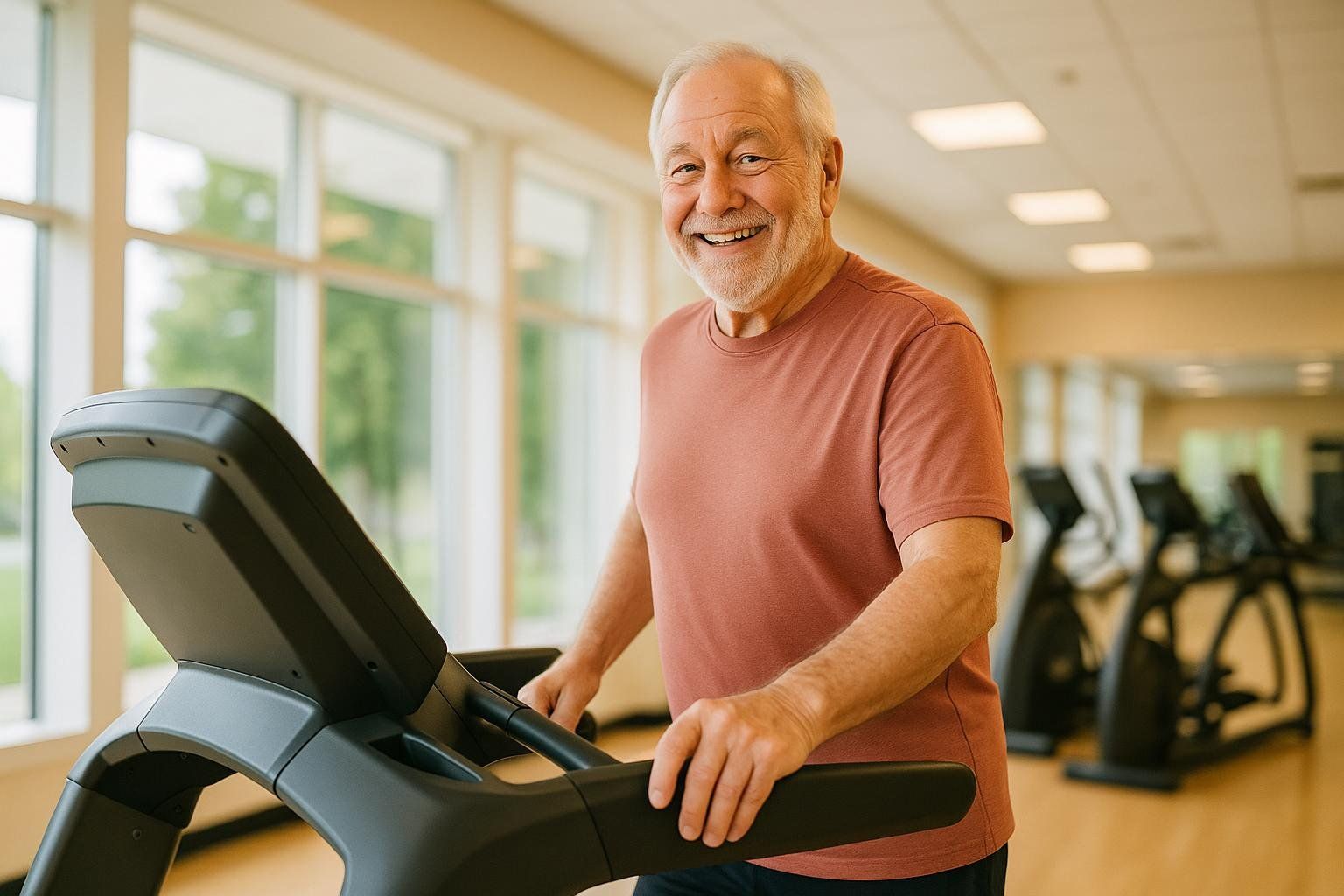
- Warm-up: 5:00 at 0–1% (RPE 2)
- Main set: 4 × [5:00 at 1–3% (RPE 3–4) + 1:00 flat easy]
- Cool-down: 3:00 easy
- Progression: Add 1–2 minutes to each work block or a 0.5–1% incline every 1–2 weeks, staying pain‑free.
- More ideas: Explore more joint-friendly options in our low-impact cardio guide.
9) Long Aerobic Day (40–60 minutes, Zone 2)
- Main set: Settle at a pace where you can talk in sentences (RPE ~4–5). Start mostly flat; add 1–3% grade if HR drifts low.
- Progression: Extend by 5 minutes each week up to 60+, or keep time fixed and aim to cover more distance at the same average HR.
- Why it works: Building your aerobic base (Zone 2) supports fat use and recovery between hard days. Learn more in our steady state cardio guide.
10) Hybrid Walk–Run Progression (30 minutes)
- Week 1:
- Run: 1:00 (RPE 6)
- Walk: 2:00
- Repeats: × 10 (flat to 1%)
- Week 2:
- Run: 1:30 (RPE 6)
- Walk: 1:30
- Repeats: × 10
- Week 3:
- Run: 2:00 (RPE 6)
- Walk: 1:00
- Repeats: × 10
- Week 4:
- Run: 8:00 (RPE 6)
- Walk: 2:00
- Repeats: × 3 (goal: consolidate into one 24-minute continuous run)
- Progression: After Week 4, add 5 minutes of continuous running per week until you reach your target duration.
- Tip: Keep “easy” truly easy—this is how you build durable endurance.
Track Progress Beyond the Scale
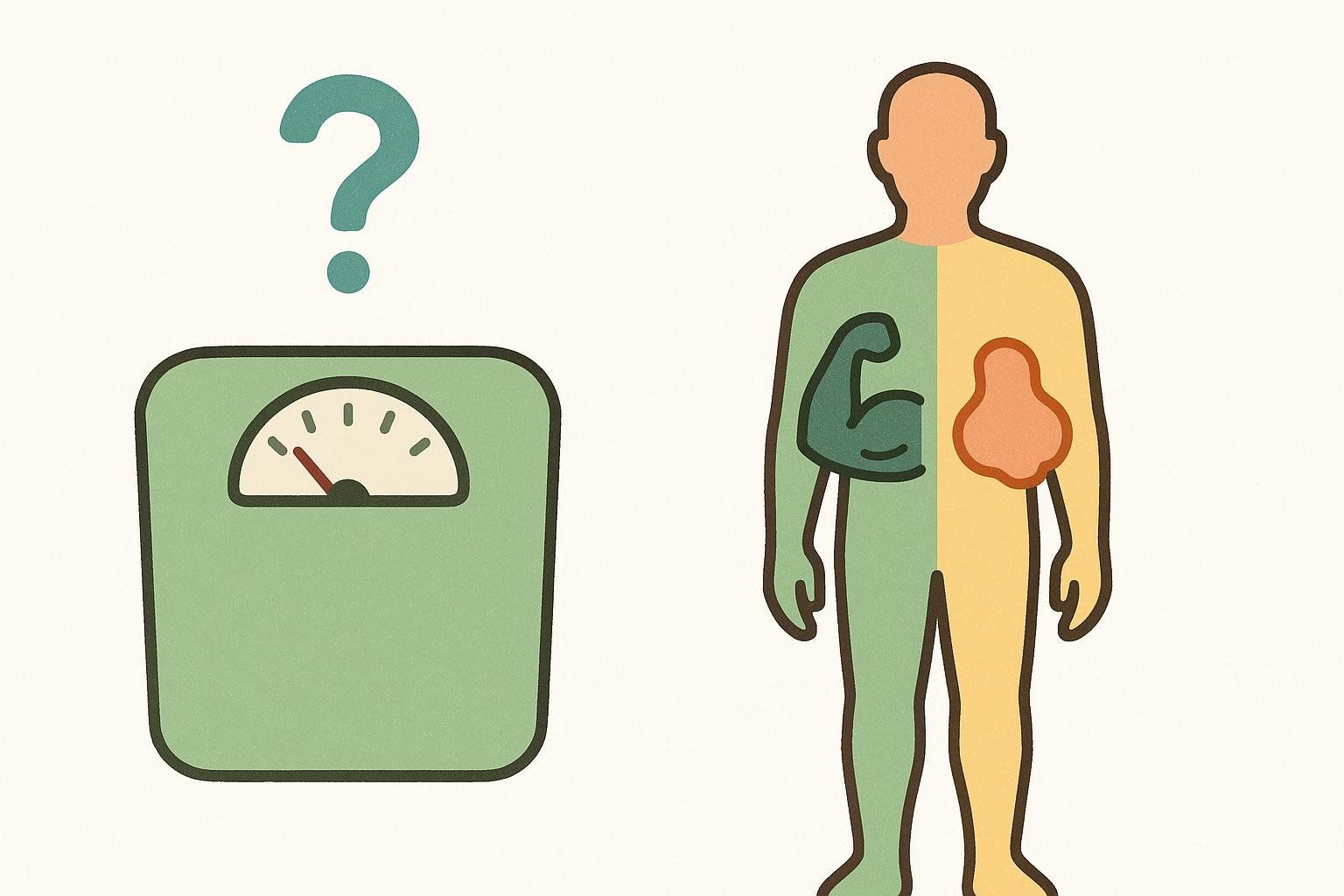
Scale weight can hide progress. To confirm you’re losing fat—not muscle—pair your treadmill training with a BodySpec DEXA scan. It reports fat mass, lean mass, and visceral fat precisely, so you can calibrate your plan. Between scans, estimate changes with our Free Body Fat Calculator, and make each scan count by following this simple prep checklist: How to Prep for Your Scan.
FAQs
Is 20 minutes on the treadmill enough to lose weight?
Yes—especially if you work at vigorous intensity or use incline. What matters most is weekly volume: build toward 150–300 minutes of moderate cardio or 75–150 minutes of vigorous work (CDC adult activity guidelines). Combine with strength training and protein‑forward nutrition to preserve lean mass.
Does incline walking burn more belly fat than flat walking?
Incline raises total energy burned, which helps reduce overall body fat. You can’t spot‑reduce, but consistent calorie burn plus nutrition changes lowers total and visceral fat over time. DEXA can track visceral fat specifically.
How often should I do HIIT on a treadmill?
Start with 1–2 sessions/week, separated by easy days. Add a third only if recovery, sleep, and performance stay strong.
Is the 12-3-30 treadmill workout effective?
It’s a solid, joint‑friendly incline routine. Research suggests it’s less time‑efficient than running for pure calories per minute but shifts more energy use toward fat and may be easier to stick with for walkers.
What speed should beginners use?
Pick a pace where you can talk in sentences (moderate). If that’s 2.7 mph on a slight incline, great. Speed is secondary to effort and form.
How do I keep treadmill workouts from feeling boring?
Use short intervals, pyramids, or hill repeats; rotate workouts; listen to podcasts; face a fan; and track wins (distance at the same heart rate, or RPE at the same speed/incline).
With these treadmill workout plans, you can ensure your effort delivers real results. Book a BodySpec DEXA scan to establish a precise baseline and track fat loss and muscle gain. Re‑scanning in 8–12 weeks is a common timeframe to see measurable changes and validate your progress.
